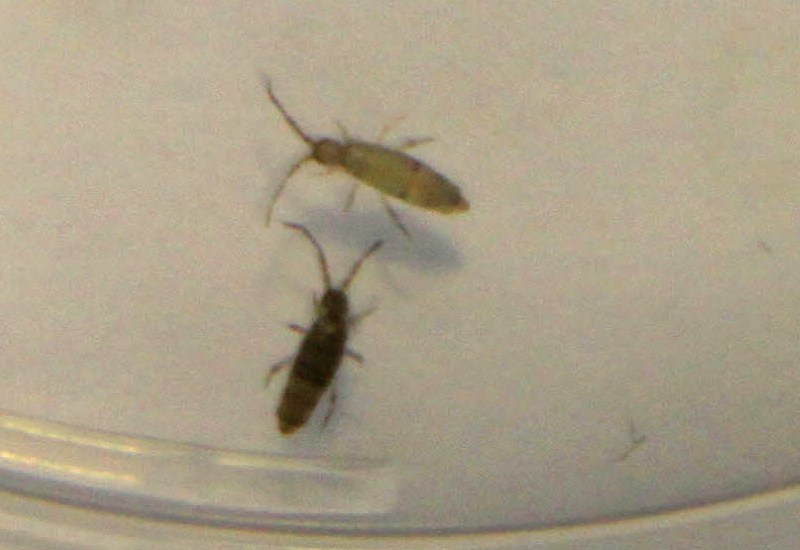

Still the males of other species of springtails place sperm with their hind legs directly into the female’s reproductive organs.įemales usually lay up to 400 eggs during their life span.Įggs can be laid singly or in large masses. Males of other species of springtails leave a sperm packet on the ground that is later picked up by the female. These female springtails desire the males to dance for them before they actually mate. For example, while parthenogenesis (reproduction without males) is common among females of some springtail species, females of other species require mating in order to lay eggs, and they are picky about which males they desire to mate. Springtail reproduction can be complicated, and is dependent on the species of springtail. Unlike other hexapods, springtails perform additional molts after reaching adulthood. Instead, springtails develop by going through a number of molts (shed their exoskeleton) as their body size grows. Springtails do not have nymphal, larval, or pupal stages. Springtails have an “ametabolous” life cycle, meaning that they do not undergo metamorphosis.

Springtails cannot live without moisture, which is why in older homes springtails will usually be found in the kitchen, bathrooms, basements, or other areas where moisture and high relative humidity is present. Springtails can be a problem in newly built structures because of damp building materials and wet plaster. When they reach a high population density, springtails search for new habitats.

Springtail populations can reach as many as 50,000 per cubic foot of forest litter or up to 2,800 per square foot in planted fields. Some species live on the surface of pools, snowfields, and other similar habitats. Therefore, they usually live in moist, cool, concealed places of soil, moss, as well as ant and termite nests.
#Springtail bugs skin
Most springtails breathe through their skin or cuticle, which is very permeable to water.ĭue to their breathing system and soft, small bodies, springtails rapidly lose water through their cuticle. Under kitchen and bathroom sinks, linoleum or water tubesĭuring dry and hot summer days, springtails often invade homes from surrounding outdoor areas because they are seeking moisture. Look for springtails in the following areas: When you see springtails in the bathroom, kitchens, windowsills, bathtubs and showers, you should know that they have most likely migrated from overly populated sites in damp and dark areas outside or inside the building. Springtails will thrive as much indoors as they will outdoors, if moisture, organic matter, and shelter are available inside the structure.įor example, springtails can live a long time on indoor potted plants or feeding on mold and mildew associated with water leaks, condensation along the plumbing, or in cracks found around a bathtub or shower. Springtails are attracted to light and may be found in lighted areas at night. Springtails can also be found on surfaces of water, on soil of potted plants, and in other moist habitats. Springtails do not bite and they require moisture, so they are short-lived inside homes.Homeowners usually encounter springtails in damp basements, kitchens, bathrooms, and garages. Rarely, springtails may become so numerous that they enter houses causing the homeowner undue stress. Springtails are also called "snowfleas" as they sometimes are noticed hopping across snow. Rarely springtails may become exceedingly abundant and may congregate in heaps several inches high on driveways, sidewalks and poolsides. Most springtails feed on decaying organic matter but a few are predaceous on other springtails, and fewer actually damage plants. Adults continue to molt from time to time but do not seem to increase in size. Young springtails molt at least four times before reaching the adult stage. Eggs are laid later singly or in batches that the female sometimes covers. Females straddle the spermatophores and work them into a genital opening. Males attach a tiny spermatophore on a stalk attached to soil particles. Most species live in the soil or in leaf mold, under bark, in decaying logs, and in other damp situations with plenty of organic matter. Springtails are most often noticed in yards during the spring.


 0 kommentar(er)
0 kommentar(er)
